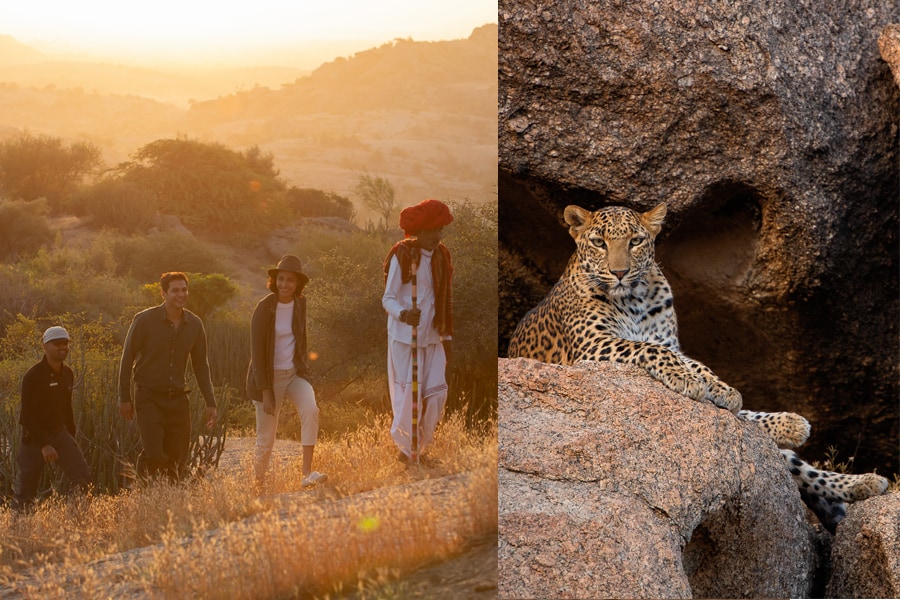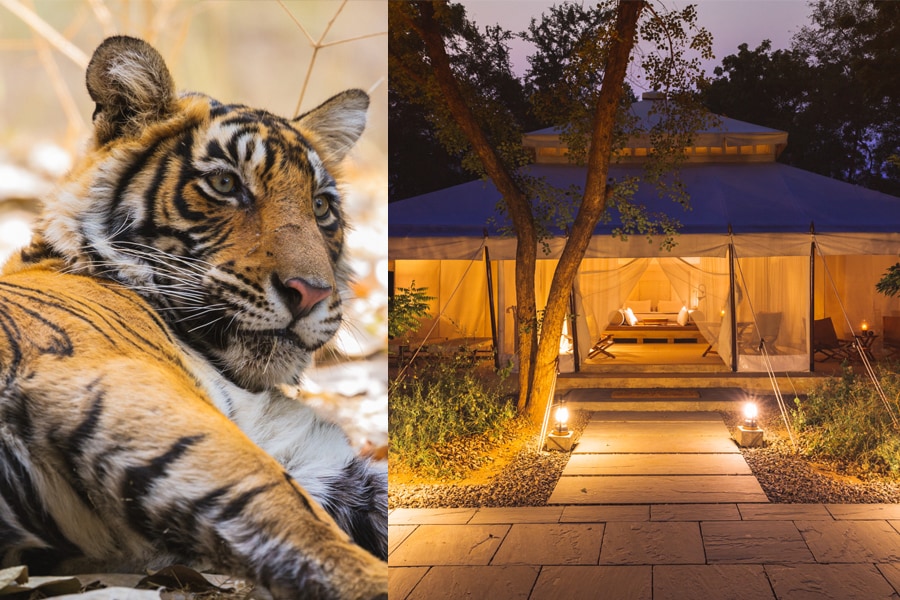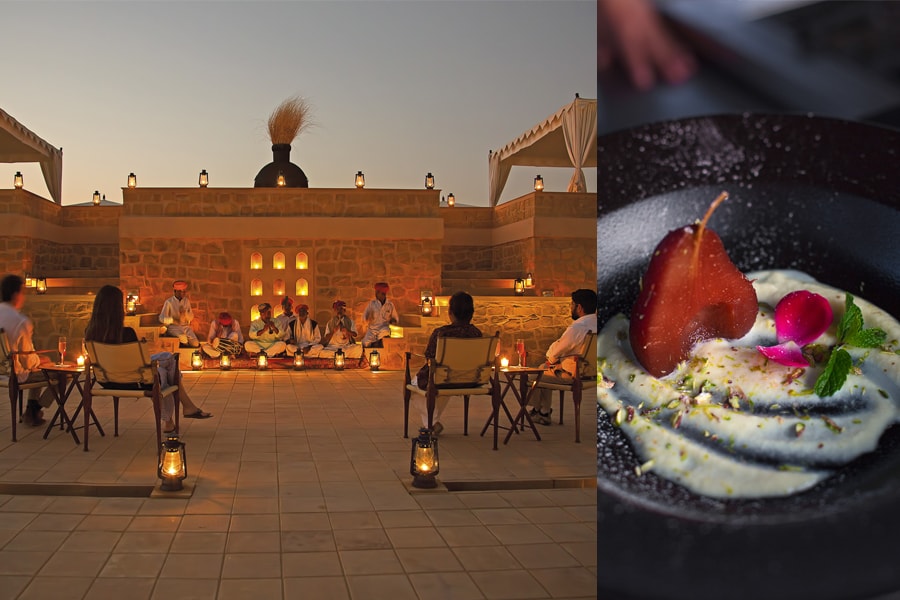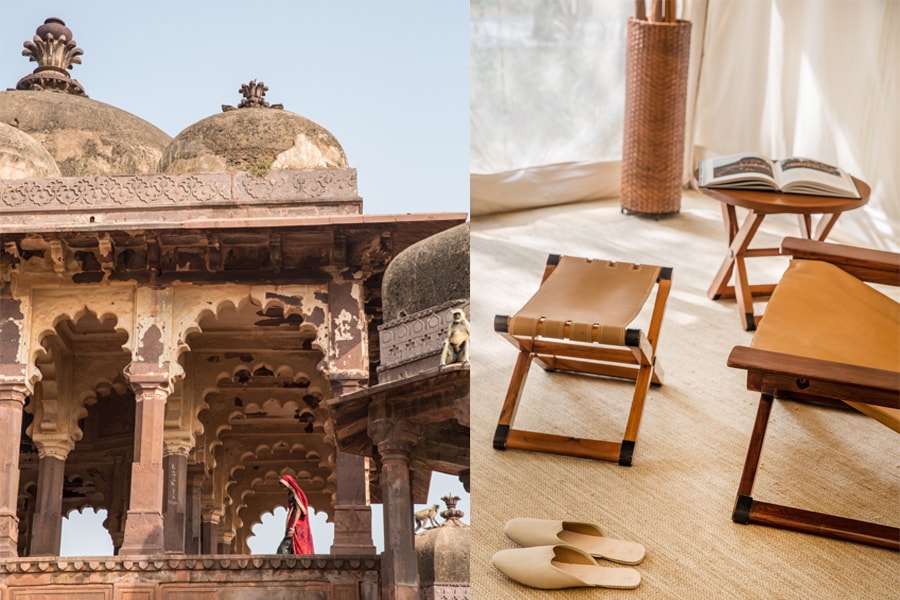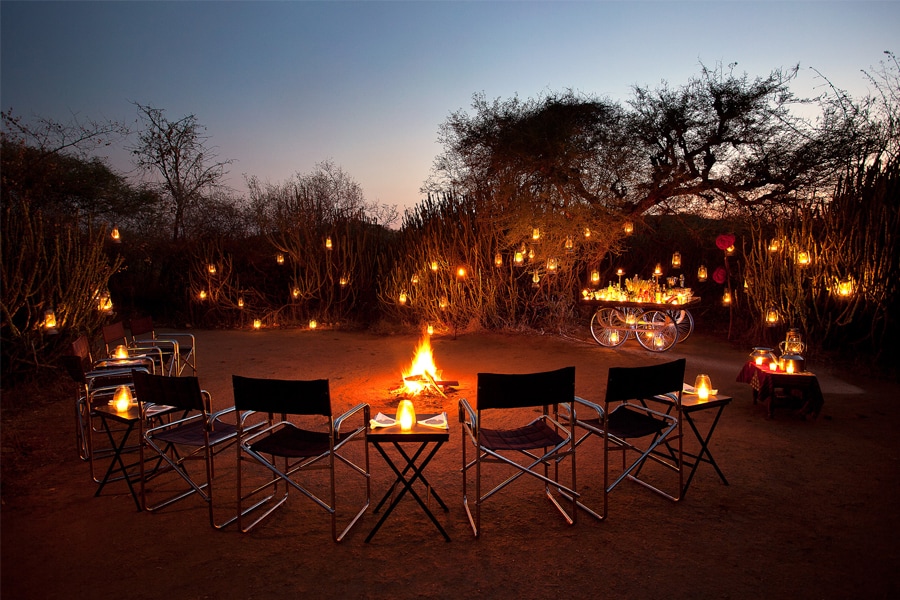
Glamping the great outdoors in uber luxury
Spas, jacuzzis, private chefs and butlers are all part of the glamping experience and living it up in the wild. And post-Covid, the travel segment is only set to grow
 SUJÁN, Sher Bagh, Ranathambore.
SUJÁN, Sher Bagh, Ranathambore.
Picture this: A night out in the wilderness of India enjoying a freshly prepared bush dinner as the sounds of the forest come alive–-birds returning to their nests and frogs croaking in the distance. After you have sipped your post-dinner drink you move to a camping tent—complete with a comfortable bed, jacuzzi, private bathtub and outdoor area, all designed to provide an ultra-luxurious experience in the midst of nature. This is the definition of glamping - glamour camping.
Interest in glamping rose among domestic travellers during the pandemic when many were in search of alternative ways to satisfy their travel bug as international exploration was on a temporary but long pause.
Now, this travel segment is expected to grow as the desire to explore more open spaces gains momentum and the offerings made by glamping sites get more enticing. Here is a peak into the world of glamping in India.
 Gazing at the Jawai landscape at dusk and Jawai Eden at dusk.
Gazing at the Jawai landscape at dusk and Jawai Eden at dusk.
Attracting domestic travellers
Many properties offering luxury tented accommodation have seen a shift in perspective in recent times in the way people want to enjoy their holidays--from wanting to immerse themselves in natural environments to exploring wildlife areas.




